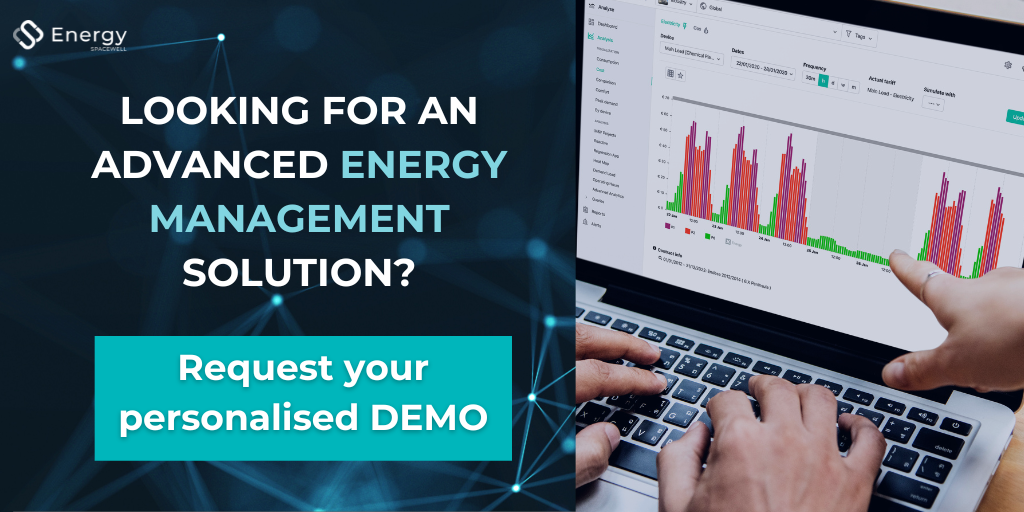Thinking of jumping on the solar bandwagon now that prices have bottomed out and it’s cheaper than ever to generate your own energy? Bear with me for a moment and consider the following:are you putting the cart before the horse?As cliché as it may sound, any approach to energy management should be looked atholisticallyand not from an individual solution perspective, argues energy manager Damon Lapping of Green Logik.
The Energy Efficiency big picture: What does yours look like?
Energy efficiency is as much as aboutcost savingsas reducing harmful greenhouse gas emissions, both problems that nearly every business faces. Unfortunately though,there is no one-size-fits all approach to energy management.In my experience, many organisations initially tend to favour one-shot,hardware-driven changes, such as switching to LED lighting or installing VSD drives or PV systems. This has been increasingly prevalent over the last few years, partly due to renewable energy costs dropping significantly and government subsidies but also the media pitching solar as a “quick fix” to complex energy challenges. Now, by no means am I rejecting PV systems as a major component of the 3-D energy future we need (decarbonised, decentralised and digital). What I am saying is thatit shouldn’t be the whole picture.
How many of you have taken a good, hard look at your facility or created a holistic energy strategy from abottom-up, inside-out approach? Let’s get ready to look past that shiny rooftop and understand the big picture of energy efficiency.
Holistic Energy Management: Where to start?
Energy Management is an inherently systematic approach to energy sustainability.But the first question I most often hear from my clients is,where should I start?
As tempting as it might be to throw some solar panels on the roof and be done with it, I always suggestexploring the ins and outs of your facilityin a diagnostic once-over or walk-through. How does it operate? Where is energy being consumed? Can you pinpoint your significant energy users? You can do this physically of course, but there arefree software toolsto help you do this in a non-invasive way too.
The second step is to establish anenergy roadmaporenergy management strategythat encompasses theshort,mediumandlongterm. Working withSMART Goals这里有很大帮助。确定你的快速赢或low hanging fruit first, then identify a list of projects that will deliver maximum energy savings. Finally, rank those projects according tocostandpayback period– and be sure to prepare yourself with the arguments you need to make theenergy efficiency case to your CFOor upper management.
Once that preliminary work has been done, you are ready to think about diving deeper. With the advent ofBig Data analyticsandsmart meteringwe are now able to establish how a facility or significant energy user behaves over time and whether or not it’s operating efficiently using algorithms and energy modelling. We are even able to go as far asforecastingenergy usage using regression models.By developing energy models at the facility or SEU level, we can analyse and manage energy use much more intelligently.
Here’s why it’s worth it. At a recent UNIDO Industrial Energy Efficiency conference, I learned that out of all the energy efficiency interventions,operational improvementsdeliver the most energy savingsand carbon emissions reductions, followed by LED lighting, steam system improvements and VSD controls.
Another recent study of Green Star rated buildings showed thatenergy efficiency hasn’t always been as great as expected through modelling prior to construction, due to a problem known asenergy drift. Why is this? One of the reasons is human error, otherwise known aspoor occupant operational control.Simply put, any energy savings achieved through hardware alone will gradually plateau over time, since an energy management system is a process of continual improvement. Involving the whole organisation in achieving energy savings and raising awareness to foment behaviour change is a good way to ensure the viability of your energy conservation measures.
So where does Renewable Energy fit?
Put another way, be sure that you fully understand实施的影响renewables first,before considering a holistic energy management approach, from both aresourceandinvestmentperspective. Whenever something operates inefficiently, it consumes and wastes vast amounts of energy and emits excessive greenhouse gases (especially if we are talking about a building). When sizing a rooftop PV system, we want to meet the maximum electrical demand required by the facility while minimising cost. Butif the facility is operating inefficiently to begin with, a larger PV system will be required to meet that excess energy demand. And of course, that larger PV system will come at an extra cost, which makes justifying further energy efficiency improvements down the road even more difficult.
On the other hand,monitoring and reducing actual demandas low as possible by following a holistic energy management approach means a smaller rooftop PV system would be required, there by lowering our CAPEX investment needs.
When it comes to energy management andbuilding energy performance, the big picture approach is something facility managers need to strive towards. Before rushing to install the next all-in-one IoT gadget and considering the job done, take aholistic mindsettoward becoming more energy efficient. Start looking at the bigger picture and always strive forcontinual improvement.Begin by improving operational practises first, and tackle that low-hanging fruit before shifting to a major hardware installation.
Editor’s Note:This original guest article was published here with kind permission from the author,Damon Lapping. Some minor changes have been made to reflect Spacewell Energy (Dexma)’s style considerations.
Damon Lapping is the founder of Green Logik and can be reached onLinkedIn.
![The Case for Holistic Energy Management [GUEST POST]](https://u5t4w5m4.rocketcdn.me/wp-content/uploads/2017/11/The-Case-for-Holistic-Energy-Management-GUEST-POST-1400x788.png)



